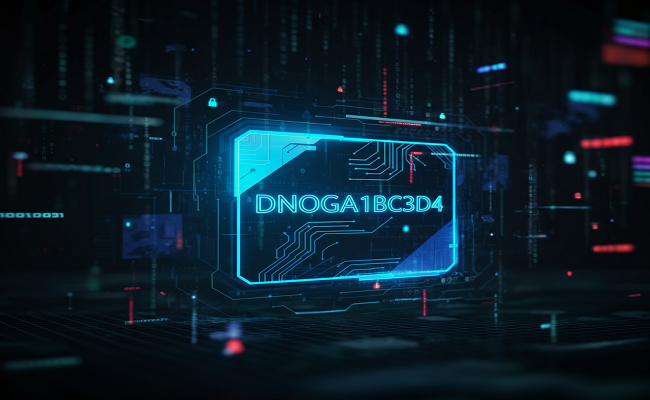In today’s fast-paced digital world, it is common to come across strange codes, combinations, and identifiers that often leave us wondering about their purpose. One such term that has been gaining attention is dnoga1b2c3d4. At first glance, it appears like a random sequence of letters and numbers. However, in the modern digital landscape, nothing is truly random. Every string or code has meaning, significance, or a potential role in shaping how information flows in technology, security, or even digital branding.
This article explores the fascinating world of dnoga1b2c3d4, what it might represent, and why such sequences are more important than they seem.
What is dnoga1b2c3d4?
The sequence dnoga1b2c3d4 may look like an arbitrary string, but such combinations are often used as unique identifiers in technology. They could serve as a system-generated password, an access token, a software product key, or even a placeholder for experimental coding projects.
In a world where millions of users interact with databases, applications, and cloud platforms every day, unique identifiers like dnoga1b2c3d4 ensure smooth functioning. They eliminate confusion, maintain security, and allow developers or systems to separate one entity from another.

The Role of Random-Looking Codes in Technology
Modern systems rely on alphanumeric codes that resemble dnoga1b2c3d4 in many ways. These codes:
- Provide Security – Randomized strings are less predictable, making them harder for hackers to guess.
- Support Large Databases – When billions of entries exist, having unique tags ensures no duplication.
- Enable Customization – Developers can use codes like dnoga1b2c3d4 as flexible placeholders for testing features.
- Improve Data Tracking – Each unique identifier helps companies track user actions, orders, or system processes.
Essentially, dnoga1b2c3d4 could symbolize a digital fingerprint in the sea of online data.
Could dnoga1b2c3d4 Be a Password?
Passwords are often generated by mixing letters, numbers, and sometimes symbols. The structure of dnoga1b2c3d4 makes it appear password-like. If that’s the case, it demonstrates the importance of creating strong, complex passwords that are difficult to crack.
Experts recommend that passwords should:
- Contain at least 12 characters.
- Mix uppercase and lowercase letters.
- Include numbers and special characters.
- Avoid personal information.
While dnoga1b2c3d4 looks strong, its real strength would depend on context and whether additional layers of security—such as two-factor authentication—are in place.
The Connection to Data Security
One of the most significant applications of codes like dnoga1b2c3d4 lies in cybersecurity. Hackers and malicious actors are always trying to exploit weak systems. To counter them, tech companies use randomly generated keys for encrypting data, securing transactions, and protecting user accounts.
Think of dnoga1b2c3d4 as a potential shield. If it were used as an encryption key or access token, it would act as a gatekeeper, allowing only the right person or system to enter. In this sense, what looks meaningless can actually be a guardian of valuable digital assets.
Branding and Symbolism of Unique Codes
Interestingly, codes like dnoga1b2c3d4 can also be adopted as part of branding. Tech startups, software platforms, or even niche online communities sometimes use unique alphanumeric names to stand out. A quirky name ensures memorability and makes the brand appear modern and futuristic.
For instance, imagine a cutting-edge app named dnoga1b2c3d4. At first, users might be curious about its odd name, but that curiosity could drive downloads and engagement. Over time, it could become a recognizable brand just like “Spotify” or “Reddit”—names that once sounded unusual too.
The Future of Codes Like dnoga1b2c3d4
The digital future depends on identifiers, and dnoga1b2c3d4 represents just one example of many. As artificial intelligence, blockchain, and cloud computing expand, the need for more secure, unique, and efficient identifiers will grow.
In blockchain, for example, wallet addresses often look like random strings. Similarly, in artificial intelligence models, codes are used to manage massive datasets. In all these cases, something as simple as dnoga1b2c3d4 could play a role in ensuring smooth, secure, and scalable operations.
Practical Lessons from dnoga1b2c3d
While dnoga1b2c3d4 itself may or may not have a direct meaning to the average user, there are valuable lessons we can learn from such codes:
- Never underestimate small details. What seems meaningless might actually hold immense digital importance.
- Security matters. Unique, randomized codes are critical in preventing cyberattacks.
- Curiosity leads to learning. Exploring sequences like dnoga1b2c3d4 can open doors to understanding how the digital world operates.
- Innovation comes from uniqueness. Even a random string can inspire creativity, branding, or technical development.
Why dnoga1b2c3d4 Catches Attention
The reason dnoga1b2c3d4 sparks interest is because it balances mystery and logic. On one hand, it looks random, sparking curiosity. On the other hand, it fits the familiar pattern of identifiers and passwords we encounter every day. This dual nature makes it more than just a jumble of characters—it becomes a symbol of the hidden codes running our digital world.
Final Thoughts
The digital world is built on codes, and dnoga1b2c3d4 is an example of how something seemingly small can have larger significance. Whether it is a password, a unique identifier, an encryption key, or even a potential brand name, dnoga1b2c3d4 highlights the importance of randomness, uniqueness, and security in technology.
As we move deeper into a world powered by artificial intelligence, big data, and cloud systems, we will continue to see sequences like dnoga1b2c3d4 shaping our digital lives. The next time you encounter a strange-looking code, instead of dismissing it, pause and think—because behind every string lies a story, just like the one behind dnoga1b2c3d4.
